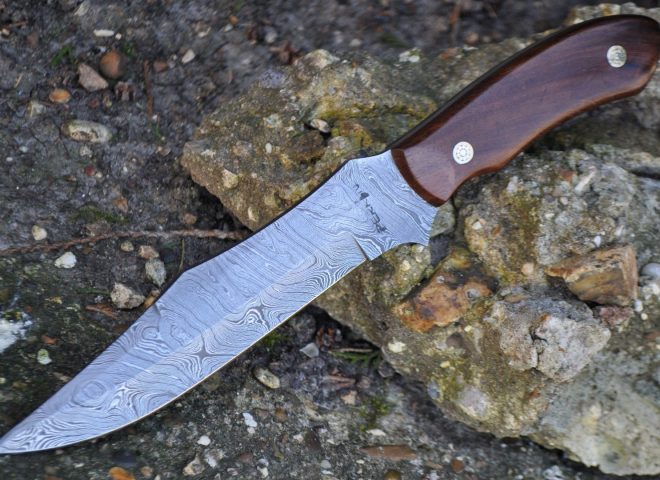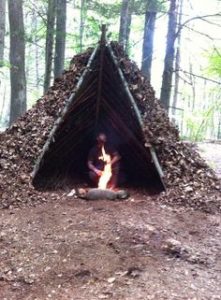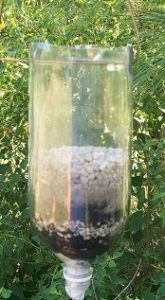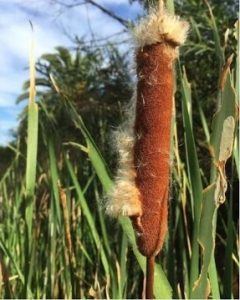A Few Quick Bushcraft Tips and Tricks

A Few Quick Bushcraft Tips and Tricks
There are literally hundreds of tips and tricks out there that are useful in a survival or bushcraft situation. We’ll focus on the four categories needed to secure the basic things you need for survival. If you follow the survival rule of threes, then your basic requirements for survival are Air, Shelter/Warmth, Water, and Food, in that order.
1. Air
The average adult can only survive for up to three minutes before risking fatal consequences. Of course exceptions to the rule are those who have purposefully worked to increase their lung capacity. A bandana, t-shirt, or other cotton material can be used over your mouth and nose to help filter out dirt, dust, and other harmful things in the air you breathe.
Climbing to higher altitudes than you are used to can cause altitude sickness. Climb to higher altitudes gradually to let your body get used to the change in oxygen levels and prevent “mountain sickness”.
2. Shelter & Warmth (Fire) Tips & Tricks for Survival
 Choose your campsite wisely. Avoid low lying areas, camping too close to a creek or river that might flood, or in an area that may be a haven for insects such as mosquitos, chiggers, ants, and ticks. Look for a natural wind block such as a large boulder or dense copse of trees but avoid fallen trees or limbs that could fall on you in high winds or heavy snow. While meadows may seem appealing because they are filled with soft grass, cold air collects in grassy meadows and so do a lot of other crawling critters!
Choose your campsite wisely. Avoid low lying areas, camping too close to a creek or river that might flood, or in an area that may be a haven for insects such as mosquitos, chiggers, ants, and ticks. Look for a natural wind block such as a large boulder or dense copse of trees but avoid fallen trees or limbs that could fall on you in high winds or heavy snow. While meadows may seem appealing because they are filled with soft grass, cold air collects in grassy meadows and so do a lot of other crawling critters!
The number of seconds between a lightning flash and thunder clap divided by five will determine the number of miles away an approaching storm is.
Keep feet warm and also dry damp socks overnight with a hot water bottle. Stainless steel bottles can be warmed in the fire and should remain lukewarm in the morning for drinking or making tea/coffee.
Keep head and shoulders covered at night but leave your face open. Remember when mom nagged you to wear a hat so you’d be warmer? There is truth to her advice. Significant body heat can be lost through the top of your head and shoulders overnight. Breathing into your sleeping bag causes condensation which is why you may wake up damp and cold.
Insulate your body from the ground as much as possible when sleeping at night. You can use anything from dry leaves to branches, an extra blanket, or even logs lashed together into a makeshift box spring.
3. Survival Bushcraft Tips and Tricks pertaining to Water
 Those annoying insects that swarm around you on the trail can actually help you find water. Mosquitos and other insects such as flies naturally gravitate to within less than 500 feet of a water source. If flies are buzzing about your head as you walk, water is likely to be close by!
Those annoying insects that swarm around you on the trail can actually help you find water. Mosquitos and other insects such as flies naturally gravitate to within less than 500 feet of a water source. If flies are buzzing about your head as you walk, water is likely to be close by!
Another of the more well-known tips is that you can eat snow to prevent dehydration. The reality is that eating frozen snow can actually cause dehydration. Always melt snow before drinking it in a survival situation.
Animals follow a routine that typically includes the same route to a watering source near dusk and again in the early morning. Following an animal at these times or knowing how to spot an animal watering path can help you find water.
If you find yourself without a source of water, use an absorbent material like a bandana or torn strips of a t-shirt to collect dew from the blades of grass. The best time to collect dew is early morning or right after a rain. Tie a piece of absorbent material to your ankles and walk through the grass. Always make sure you collect dew from an area that is as free of pesticides, poisonous plants, and animal excrement as possible.
4. Foraging for Food
 One of the lesser known bushcraft tips and tricks is that cattails are a wonderful asset in a survival situation. Cattails grow in damp or wet areas which means some kind of water is near. Many parts of the cattail are edible (pollen/fluff, roots, and stalk) if you know how to process first.
One of the lesser known bushcraft tips and tricks is that cattails are a wonderful asset in a survival situation. Cattails grow in damp or wet areas which means some kind of water is near. Many parts of the cattail are edible (pollen/fluff, roots, and stalk) if you know how to process first.
Do not eat white and yellow berries. Avoid red berries if you don’t 100% know they are edible (some are poisonous), as well as shiny leaves, thorny plants, and flowers that have an umbrella shape.
Throw a manual pencil sharpener in your BOB to use when you need to sharpen a stick, gig, or arrow/spear for hunting. In addition, many people have been successful hunting with an older and more basic weapons such as an atlatl.
What other tips and tricks have you heard about? Have you had to put any of them into practice in an actual survival situation? Let us know in the comments below.
A Few Quick Bushcraft Tips and Tricks air bushcraft foraging Shelter tips tricks Warmth Water


2 Responses
We do not really need those hundreds of tips. Just these basics will do. Thanks for sharing!
This is one of our older articles but its still relevant! Thanks for the comment.